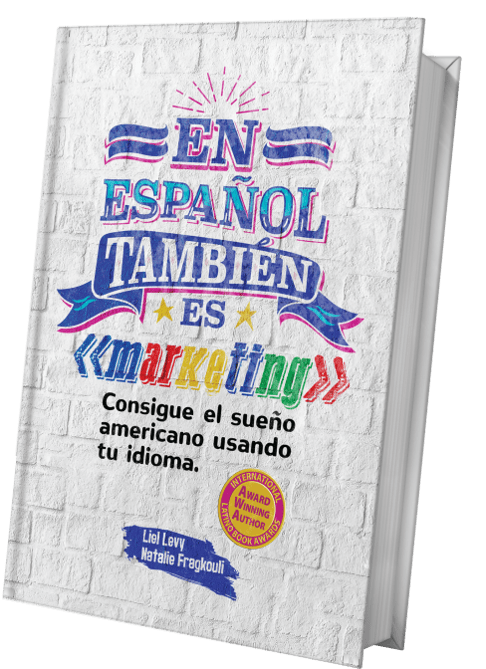What is website taxonomy? How will it impact your law firm’s digital marketing strategy? Is it connected to your URL structure? Best practices for your law firm SEO and SEM campaigns.
Website (or URL) taxonomy is a commonly used term in the world of digital marketing and search engine optimization (SEO). However, sometimes the actual meaning and value are not clear and potentially overlooked. In this article, you’ll learn what website taxonomy is, how it is related to URL structure, how it affects the user experience (your law firm’s potential clients), how Google uses it, and best practices that will help you with your legal digital marketing efforts.
What do you mean with the term website taxonomy?
The definition of taxonomy: Taxonomy is the classification of something, a scheme of classification.
How does this relate to the online world? It’s the ecosystem you create on your website when labeling, naming, and grouping content that shares similar characteristics. In other words, a successful taxonomy strategy groups your relevant content, creating a seamless journey for your visitor, your law firm’s prospective client.
What are the benefits of website taxonomy?
- First and foremost, you deliver relevant content to the searcher. Following the proper architecture will allow you to present your law firm’s content organized by type, for example, practice areas, Q&As, video content, etc. It adds a builtin filter to your content.
- Website taxonomy helps search engines crawl your website and find relevant content. What does it mean? It’s beneficial for your law firm’s onsite SEO. Google and other search engines favor user-friendliness, and your architecture shows a lot about user experience.
- Is it relevant to your legal SEM strategies? No doubt about it. We’ve talked about the importance of Quality Score and how it can help you get more while you spend less. Your content and relevance are a component of your Quality Score, so pay close attention to your website taxonomy and keep in mind that content is king; but what’s the use of a king that’s hidden and hard to find?
Tip: Your ultimate goal is to drive more traffic to your website and increase your caseload. Determine your strategy and make sure that you boost your SEO and SEM efforts.
- The taxonomy will help you keep searchers on your website, serving them related content. Let’s make it evident with an example. A client (current or prospective) gets on your website, searching for information about your personal-injury practice. With the proper taxonomy in place, he will have suggested content, sending him to a relevant case that you won and posted on your website. This will help you stay on top of mind and convert to actual cases. Additionally, it will enhance your internal linking, a crucial component for user experience and search engine crawling.
Tip: Know your audience and speak in their language. You want to help your searchers and visitors; your website’s content should be relevant to them, and its taxonomy should follow the same path.
- URL structure is a component of your overall taxonomy. Let’s understand the concept of URL structure by breaking it down into parts.
- Scheme: Nowadays most use the https:// protocol, which is a secure protocol and it’s suggested to start using it if you’re not doing already.
- Subdomain: It doesn’t always exist, but it could be in the form of https:// blog.
- Main domain or second-level domain: It’s your domain name, in our case, for example, it’s nanatomedia.
- Top-level domain: It’s what determines the type of your organization, for example, it could be a .com or .org.
- Subfolder or subdirectory: It’s what determines every main subfolder on your website. For a law firm, it would be the services page of the about-us.
- Slug: It’s the description of every subpage. Setting law firms as an example again, it would be a specific area of practice within your services page.
Now that we’ve explained the actual structure let’s dig deeper and understand the importance. Google crawls every page, and the proper URL structure allows the bots to understand what’s inside. In other words, keep your URLs organized; they are part of your website.
Tip: Hispanic legal digital marketing is a must for your law firm, and your taxonomy should follow the best practices. Ensure that your structure is compliant with the cultural differences, and your URLs are in Spanish, using transcreating methods.
Remember: Every successful strategy is scalable. Your taxonomy and URL structure should be no different. Think of it as your law firm, you might expand to a new location, and your website should be ready to reflect this.
As we always do at the end of your articles, we’ll try to break it down to the main takeaways. So what are they?
- Taxonomy is vital for your website in terms of user experience and search engine crawling.
- It can boost your law firm’s digital marketing campaigns, whether it’s SEO or SEM.
- Set clear goals and objectives. Build your strategy with these in mind.
- If you are following a Hispanic digital marketing strategy, your taxonomy should follow the Spanish cultural approach. We, at Nanato Media, are experts on Hispanic digital marketing, so don’t hesitate to contact us if you have questions.



